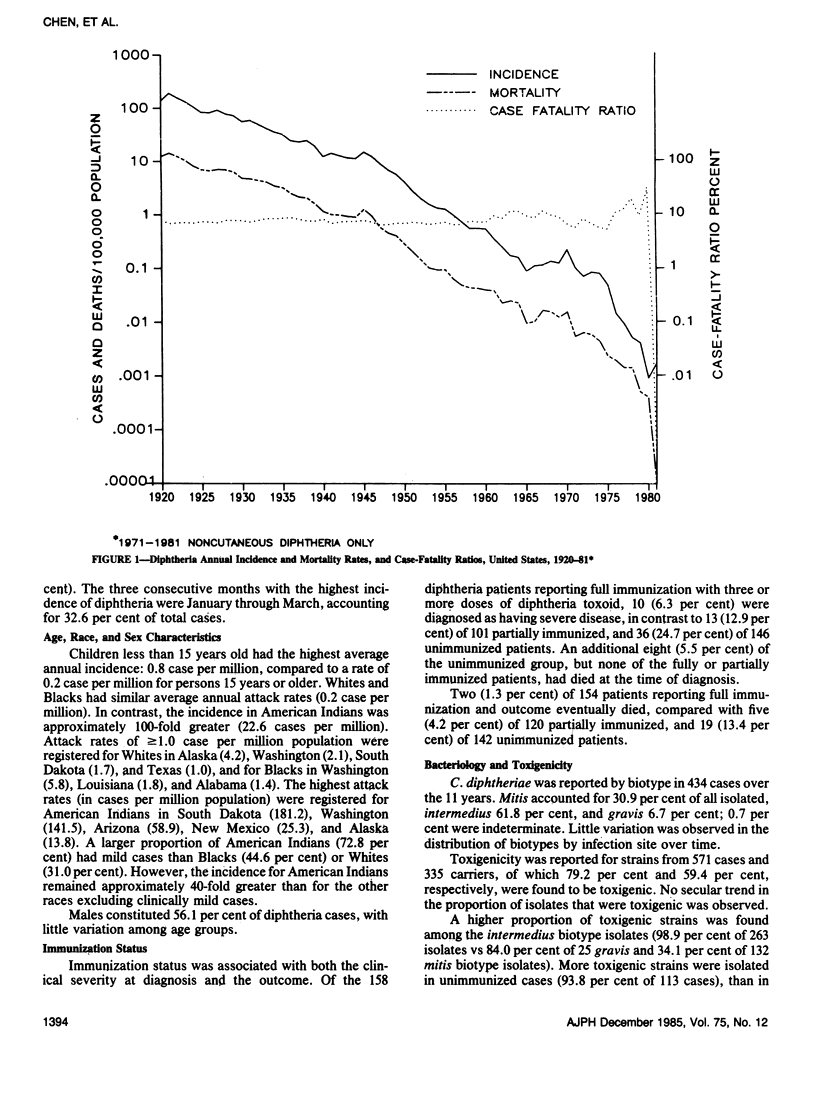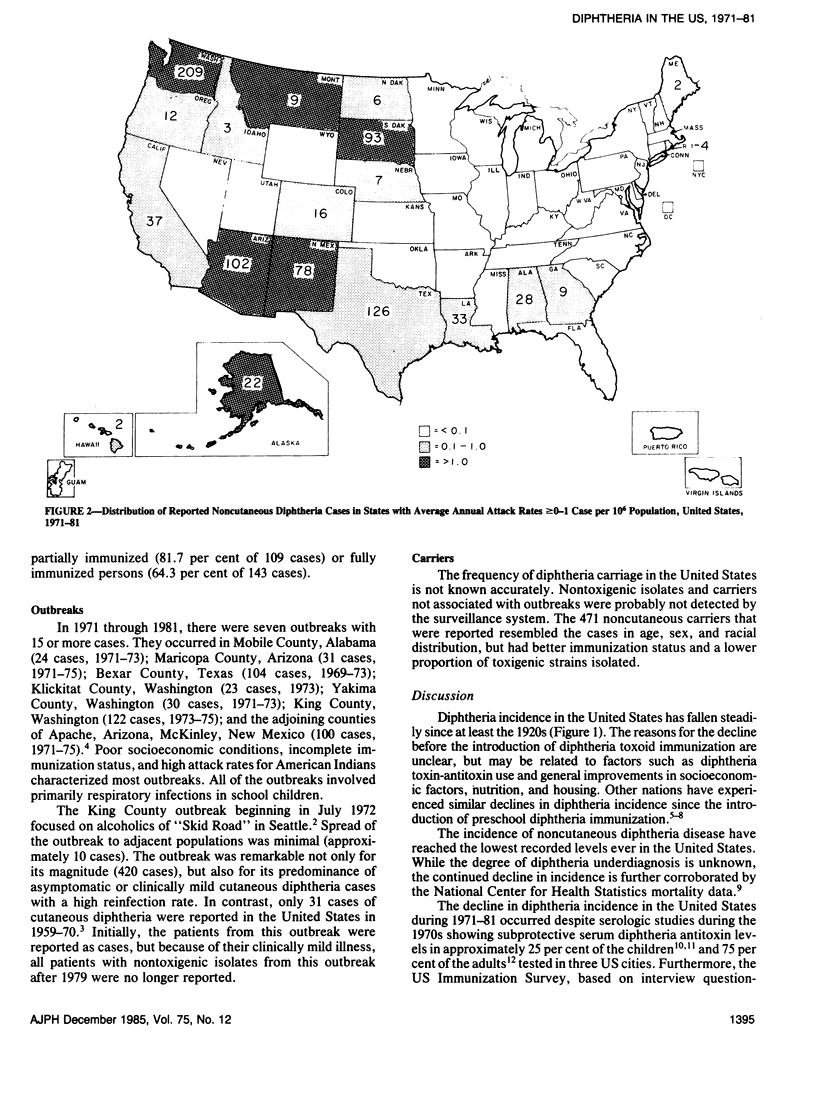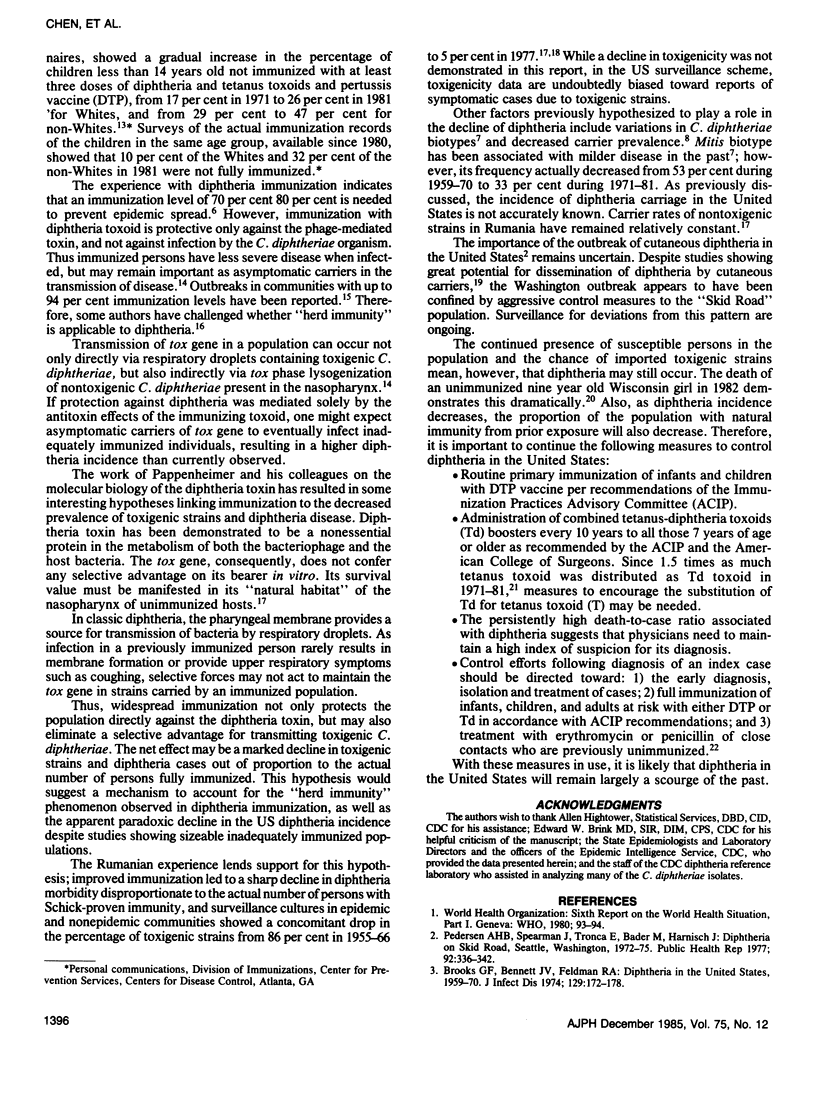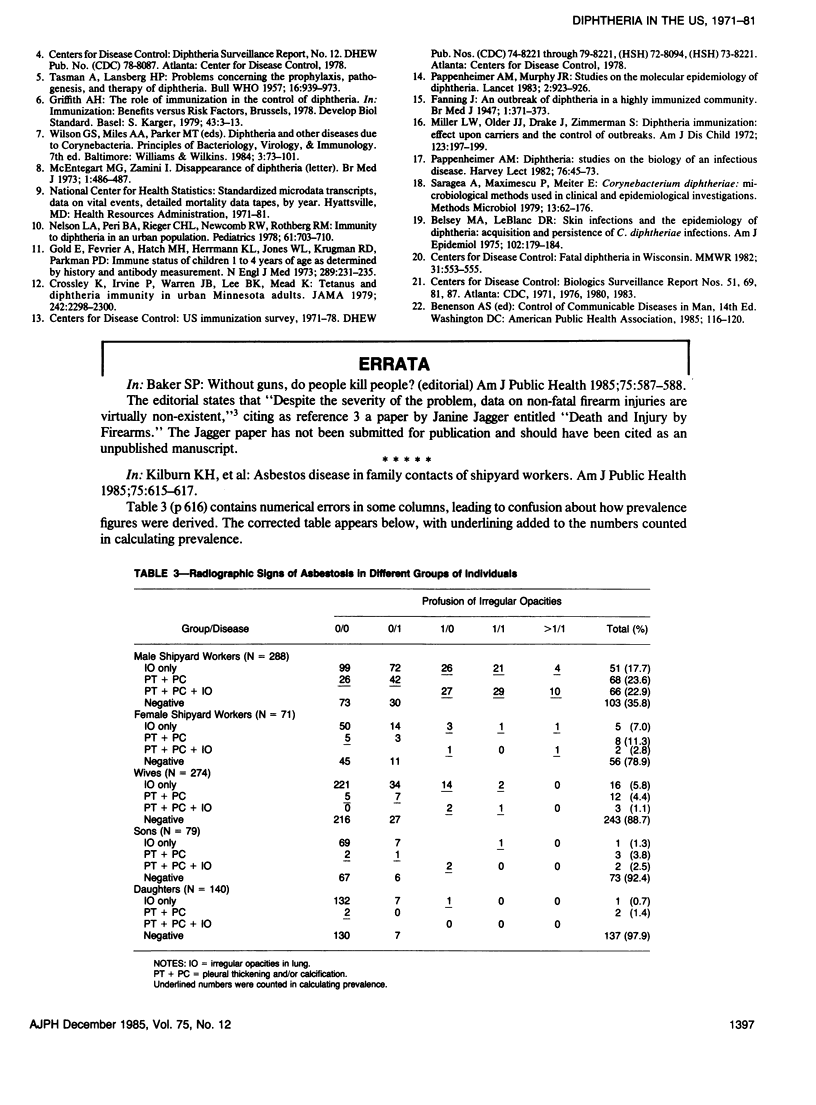Abstract
After a decade-long resurgence, including a large cutaneous diphtheria outbreak in Washington State, the diphtheria incidence rate in the United States reached its lowest recorded level ever in 1980--two patients (0.01 case per million). Mortality paralleled the decline in incidence rate. Only 143 of the 3,141 US counties reported noncutaneous diphtheria patients during 1971-81; most were located in the West. The highest attack rates were experienced by children less than 15 years old (0.8 case per million) and by American Indians (22.6 cases per million). Persons immunized with three or more doses of diphtheria toxoid had a lower death-to-case ratio (1.3 per cent) than totally unimmunized persons (13.4 per cent). The reasons for the dramatic decline in diphtheria incidence rates are unclear, although it has been postulated that the gene for producing diphtheria toxin may be lost from organisms in highly immunized populations. Significant proportions of the adult and elderly populations are susceptible to diphtheria. Continuation of primary immunization with increased emphasis on the routine use of tetanus and diphtheria toxoids (Td) boosters in adults should ensure that diphtheria will remain largely a scourge of the past.
Full text
PDF




Selected References
These references are in PubMed. This may not be the complete list of references from this article.
- Belsey M. A., LeBlanc D. R. Skin infections and the epidemiology of diphtheria: acquisition and persistence of C diphtheriae infections. Am J Epidemiol. 1975 Aug;102(2):179–184. doi: 10.1093/oxfordjournals.aje.a112145. [DOI] [PubMed] [Google Scholar]
- Brooks G. F., Bennett J. V., Feldman R. A. Diphtheria in the United States, 1959-1970. J Infect Dis. 1974 Feb;129(2):172–178. doi: 10.1093/infdis/129.2.172. [DOI] [PubMed] [Google Scholar]
- Crossley K., Irvine P., Warren J. B., Lee B. K., Mead K. Tetanus and diphtheria immunity in urban Minnesota adults. JAMA. 1979 Nov 23;242(21):2298–2300. [PubMed] [Google Scholar]
- FANNING J. An outbreak of diphtheria in a highly immunized community. Br Med J. 1947 Mar 22;1(4498):371–373. doi: 10.1136/bmj.1.4498.371. [DOI] [PMC free article] [PubMed] [Google Scholar]
- Gold E., Fevrier A., Hatch M. H., Herrmann K. L., Jones W. L., Krugman R. D., Parkman P. D. Immune status of children one to four years of age as determined by history and antibody measurement. N Engl J Med. 1973 Aug 2;289(5):231–235. doi: 10.1056/NEJM197308022890502. [DOI] [PubMed] [Google Scholar]
- McEntegart M. G., Zamiri I. Disappearance of diphtheria. Br Med J. 1973 Feb 24;1(5851):486–487. doi: 10.1136/bmj.1.5851.486-e. [DOI] [PMC free article] [PubMed] [Google Scholar]
- Miller L. W., Older J. J., Drake J., Zimmerman S. Diphtheria immunization. Effect upon carriers and the control of outbreaks. Am J Dis Child. 1972 Mar;123(3):197–199. doi: 10.1001/archpedi.1972.02110090067004. [DOI] [PubMed] [Google Scholar]
- Nelson L. A., Peri B. A., Rieger C. H., Newcomb R. W., Rothberg R. M. Immunity to diphtheria in an urban population. Pediatrics. 1978 May;61(5):703–710. [PubMed] [Google Scholar]
- Pappenheimer A. M., Jr Diphtheria: studies on the biology of an infectious disease. Harvey Lect. 1980;76:45–73. [PubMed] [Google Scholar]
- Pappenheimer A. M., Jr, Murphy J. R. Studies on the molecular epidemiology of diphtheria. Lancet. 1983 Oct 22;2(8356):923–926. doi: 10.1016/s0140-6736(83)90449-x. [DOI] [PubMed] [Google Scholar]
- Pedersen A. H., Spearman J., Tronca E., Bader M., Harnisch J. Diphtheria on Skid Road, Seattle, Wash., 1972-75. Public Health Rep. 1977 Jul-Aug;92(4):336–342. [PMC free article] [PubMed] [Google Scholar]
- TASMAN A., LANSBERG H. P. Problems concerning the prophylaxis, pathogenesis and therapy of diphtheria. Bull World Health Organ. 1957;16(5):939–973. [PMC free article] [PubMed] [Google Scholar]


